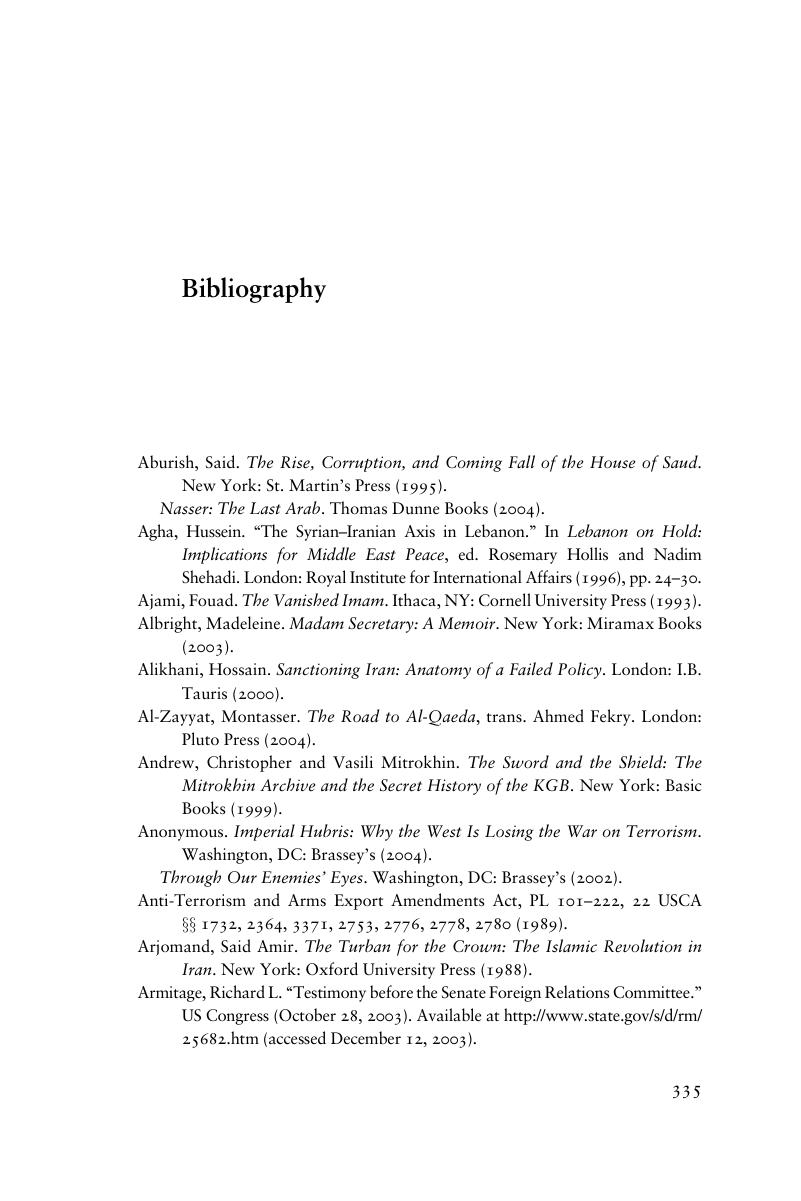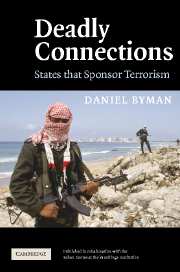Book contents
- Frontmatter
- Contents
- List of tables
- Acknowledgments
- List of acronyms
- Map: A political map of the Middle East and South Asia
- 1 Introduction
- 2 Why do states support terrorism?
- 3 The nature and impact of state support
- 4 Iran and the Lebanese Hizballah
- 5 Syria and Palestinian radical groups
- 6 Pakistan and Kashmir
- 7 Afghanistan under the Taliban
- 8 Passive sponsors of terrorism
- 9 The difficulties of stopping state sponsorship
- 10 Halting support for terrorism
- Appendix: Major terrorist groups
- Bibliography
- Index
- References
Bibliography
Published online by Cambridge University Press: 05 September 2012
- Frontmatter
- Contents
- List of tables
- Acknowledgments
- List of acronyms
- Map: A political map of the Middle East and South Asia
- 1 Introduction
- 2 Why do states support terrorism?
- 3 The nature and impact of state support
- 4 Iran and the Lebanese Hizballah
- 5 Syria and Palestinian radical groups
- 6 Pakistan and Kashmir
- 7 Afghanistan under the Taliban
- 8 Passive sponsors of terrorism
- 9 The difficulties of stopping state sponsorship
- 10 Halting support for terrorism
- Appendix: Major terrorist groups
- Bibliography
- Index
- References
Summary

- Type
- Chapter
- Information
- Deadly ConnectionsStates that Sponsor Terrorism, pp. 335 - 358Publisher: Cambridge University PressPrint publication year: 2005



